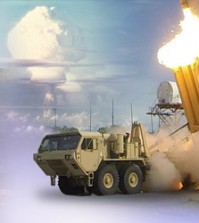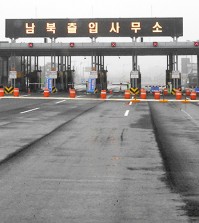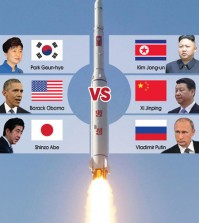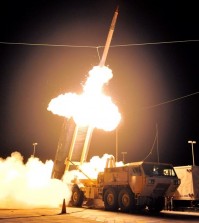- California Assembly OKs highest minimum wage in nation
- S. Korea unveils first graphic cigarette warnings
- US joins with South Korea, Japan in bid to deter North Korea
- LPGA golfer Chun In-gee finally back in action
- S. Korea won’t be top seed in final World Cup qualification round
- US men’s soccer misses 2nd straight Olympics
- US back on track in qualifying with 4-0 win over Guatemala
- High-intensity workout injuries spawn cottage industry
- CDC expands range of Zika mosquitoes into parts of Northeast
- Who knew? ‘The Walking Dead’ is helping families connect
Korea top choice for U.S. missile shield
By Jun Ji-hye
The United States has put South Korea at the top of a list of countries where it can station missiles for the U.S. anti-missile defense shield, sources said Monday.
This contradicts the government’s position that it will not join the Washington-led network of interceptors against ballistic missile attacks not just from North Korea but also China.
China has been adamant in its opposition to U.S. missiles being stationed on the Korean Peninsula.
“The U.S. has finished an on-the-spot survey and a review of military influence that the deployment may bring about early this year,” said a source on condition of anonymity.
“The final decision will be made soon about whether the U.S. military will bring the Terminal High-Altitude Area Defense (THAAD) missile defense battery into South Korea.”
There has been speculation that the defense chiefs of the two countries will make a final decision at their annual Security Consultative Meeting (SCM) in Washington in October.
Defense Minister Han Min-koo plans to attend the meeting.
The advanced missile-defense system, with a range of 150 kilometers, is regarded as an indispensable element of the defense system, along with the SM-3 that can intercept missiles at an altitude of 400-500 kilometers.
Washington reportedly wants to bring the system into South Korea to help deter threats from North Korea.
The possible deployment has prompted opposition from Russia and China, which are concerned that the system would negatively affect the regional situation and provoke an arms race.
Seoul has maintained that the deployment of THAAD would help strengthen the nation’s security.
“If the U.S. deploys THAAD on the Korean Peninsula, it would help to deter North Korea’s nuclear or missile attacks, and enhance security on the peninsula,” Minister Han said in July.
Observers believe that a recent visit by U.S. Deputy Defense Secretary Robert Work was also part of efforts to deploy the system.
Speaking at a news conference at the Osan Air Base in Pyeongtaek, Gyeonggi Province, Work said his country hoped that South Korea’s plan to develop its own missile defense system would be compatible with the U.S. system.
“What we hope is to have an extremely interoperable system between the U.S. theater missile defense and the KAMD (Korea Air and Missile Defense) … We really want interoperability,” he said, noting that there were “very low-cost, high-impact ways to link these systems.”
A Ministry of National Defense official declined to elaborate, simply saying, “We have not been notified of anything from the U.S.”















